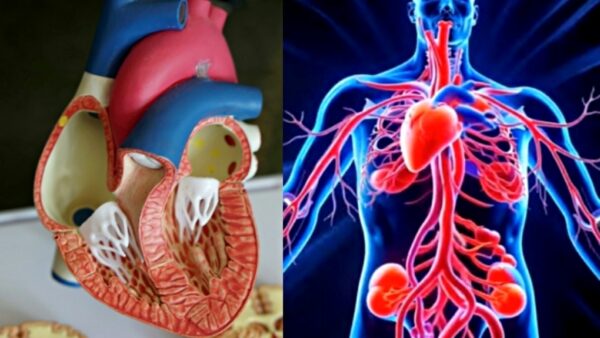Have you ever wondered how blood flows through your body and why it is so important for your overall health? In this article, we will explore the intricate process of blood flow, from the moment it leaves your heart to the moment it reaches every cell in your body.
What is Body Blood Flow?
Blood flow refers to the movement of blood through your circulatory system, which is made up of your heart, blood vessels, and blood. The process is crucial for delivering oxygen and nutrients to your body’s tissues and organs, as well as removing waste products and carbon dioxide (CO2). Without proper blood flow, your physical body would not be able to function efficiently.
How Does Blood Flow Through the Body?
The Two Circuits: Pulmonary Circulation and Systemic Circulation
- Pulmonary Circulation: Deoxygenated blood returns to the right side of the heart.
The right side pumps this blood to the lungs (In the lungs, the blood releases carbon dioxide and picks up oxygen. Oxygenated blood then flows back to the left side of the heart. - Systemic Circulation: The left side of the heart pumps the oxygenated blood to the rest of the body.

- Heart (a four-chambered organ that pumps blood): The journey of body blood flow begins in the heart. The heart is a muscular organ that pumps blood throughout the body. It has four chambers: two atria and two ventricles.
- Arteries: From the heart, oxygen-rich blood is pumped into the arteries, which are blood vessels that carry blood away from the heart to the rest of the body. Arteries have thick, muscular walls that help them withstand the high pressure of blood flow.
-
Capillaries: Arteries branch out into smaller blood vessels called capillaries. Capillaries are tiny, thin-walled vessels where the exchange of oxygen, nutrients, and waste products occurs between the blood and your body’s tissues.
- Veins: After passing through the capillaries, blood returns to the heart through the veins. Veins are blood vessels that carry blood back to the heart. They have valves to prevent blood from flowing backward.
Why Proper blood flow is essential for maintaining good health? Here are some reasons why:
- Delivers Oxygen and Nutrients: Blood flow delivers oxygen and nutrients to your body’s cells, which they need to function properly.
- Removes Waste Products: Blood flow carries waste products and carbon dioxide away from your body’s tissues and organs, helping to keep them healthy.
- Regulates Body Temperature: Blood flow helps regulate your body temperature by distributing heat throughout your body.
- Supports Healing: Adequate blood flow is crucial for wound healing and tissue repair. Blood brings immune cells and nutrients to injured areas to promote healing.
- Lower the risk of energy blockages within our physical body.
How Can You Improve Body Blood Flow?
There are several ways you can improve blood flow in your body:
- Stay Active: Regular exercise can help improve blood flow by increasing the efficiency of your heart and blood vessels.
- Eat a Healthy Diet: Consuming a diet rich in fruits, vegetables, and whole grains can improve blood flow by providing essential nutrients and antioxidants.
- Stay Hydrated: Drinking an adequate amount of water helps maintain blood volume and supports proper blood flow.
- Avoid Smoking: Smoking can constrict blood vessels and impair blood flow, so quitting smoking can have a positive impact on your blood circulation.
- Natural supplements (Such as Vitamin D, Omega-3 fatty acids, Calcium, Magnesium, and Vitamin B12) might be essential for certain seniors because their bodies are less efficient at producing or absorbing them from food sources and sunlight. However supplements should be taken only after consulting a healthcare provider to ensure they are safe and appropriate for individual health needs and to avoid potential interactions with medications.
In conclusion, understanding blood flow is crucial for maintaining good health. By knowing how blood flows through your body and why it is important, you can take steps to improve your blood circulation and overall well-being. Remember to stay active, eat a healthy diet, stay hydrated, and avoid smoking to support optimal blood flow and circulation.
